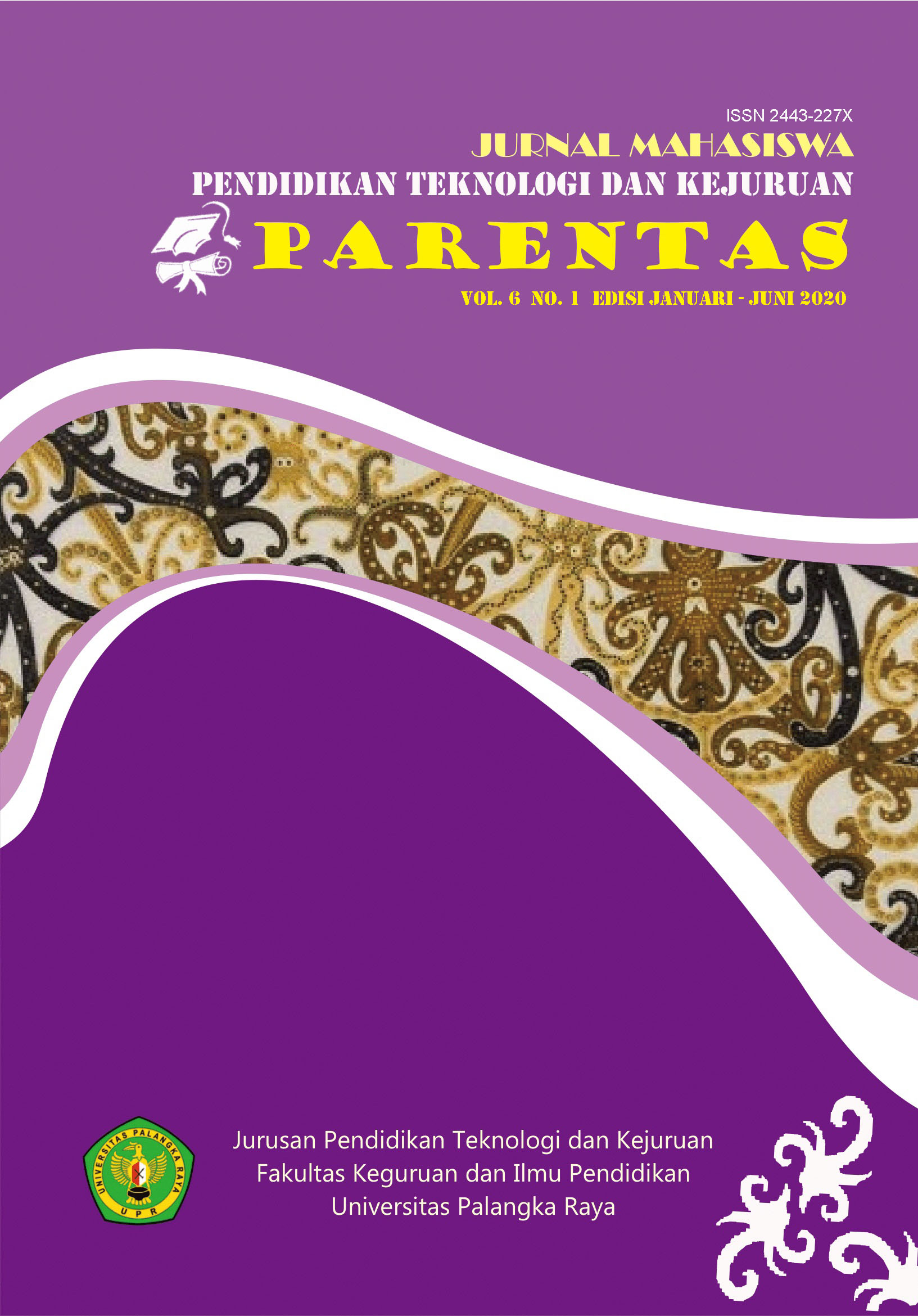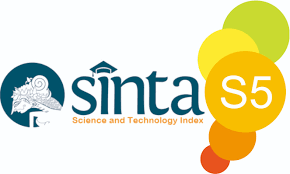THE USE OF STAD TYPE AS COOPERATIVE LEARNING MODEL ON MATERIAL OF PICTORIAL DRAWING PROJECTION (3D) IN CLASS X FOR COMPETENCY OF CONSTRUCTION AND PROPERTY BUSINESS SKILLS AT SMK-1 PALANGKA RAYA
DOI:
https://doi.org/10.37304/parentas.v6i1.2617Keywords:
Cooperative Type of STAD, Learning Outcomes, Pictorial Projection (3D)Abstract
The material of pictorial drawing projection (3D) relatively does not achieve the minimum passing grade at about 70. It can be observed from the student learning outcomes in the previous lecturing year that was only 27.27% which is able to reach the minimum criteria for completeness. Based on this background, this research implements a learning model by involving students to be active in the learning process. Then it is expected to improve the student’s learning outcome by using cooperative learning model-type of STAD. The purpose of this research is to improve the student’s learning progress after applying the cooperative learning model-type of STAD. Furthermore, this study is descriptive by the quantitative approach. Whole students of class X BPK SMK 1 Palangka Raya academic year on 2018/2019 is applied as Population of this research and using the total sampling technique based on about 29 students to be the sample. In order to obtain the data collection, it applies the writing test such essay model during last meeting. The item validition of the final test was verified by three academically professional in which consisting of a lecturer from Department of Construction Engineering Education in FKIP University of Palangka Raya and two vocational school teachers for technical drawing subject in SMK-1 Palangka Raya. Before the items were being validated, by around 25 questions have been proposed there were only 8 questions being approved. Meanwhile, in this research the student’s test result is organized being the data collection. Briefly, this study is able to show that the STAD type in learning model shows the positive progress due to technically vocational students could provide the active role in a group for each meeting, actively giving some questions and actively cooperating to each other to solve given problems. By 29 students, there were 27 students which obtained the final score at above 70 of the minimum completeness criteria. Nonetheless the students can perform the cognitive achievement level at 83% and 93% is for the classical completeness learning. Finally, students level achievement in psychomotor can reach 77% with the classical completeness learning on 100%.
Downloads
Downloads
Published
Issue
Section
License
Copyright (c) 2020 PARENTAS: Jurnal Mahasiswa Pendidikan Teknologi dan Kejuruan

This work is licensed under a Creative Commons Attribution-NonCommercial 4.0 International License.


















